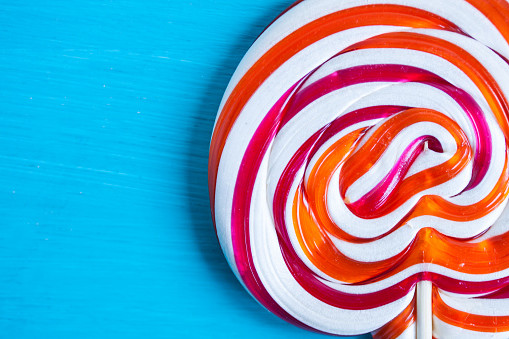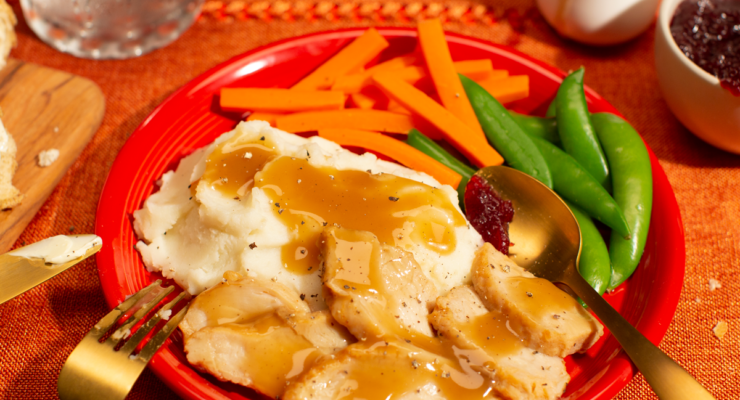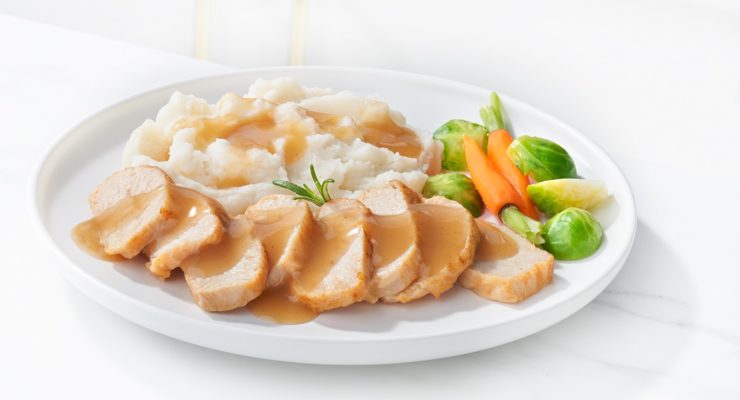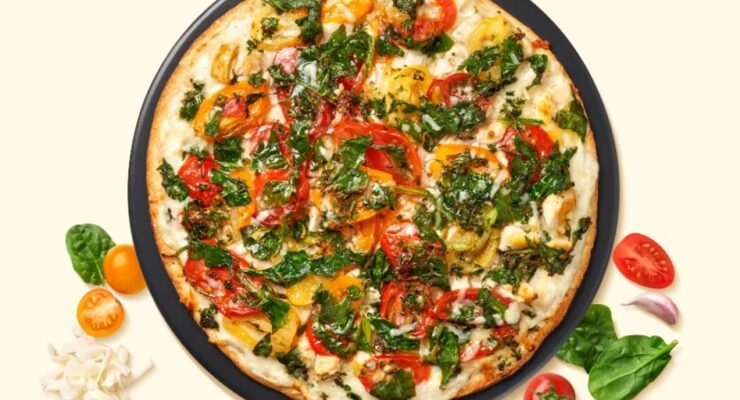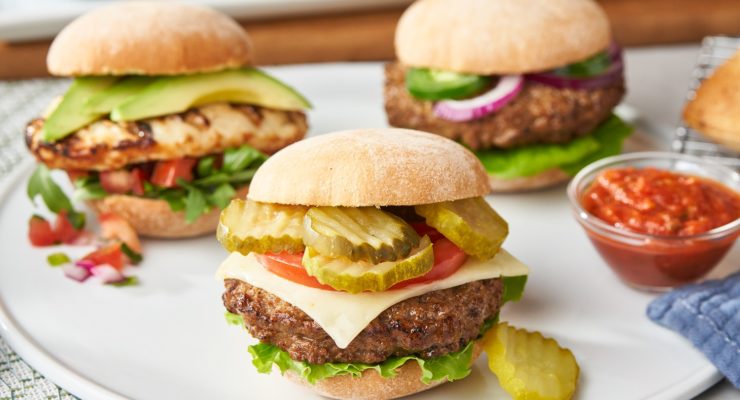Grocery Shopping 101: Condiments on Nutrisystem
Article posted in: Nutrisystem for Men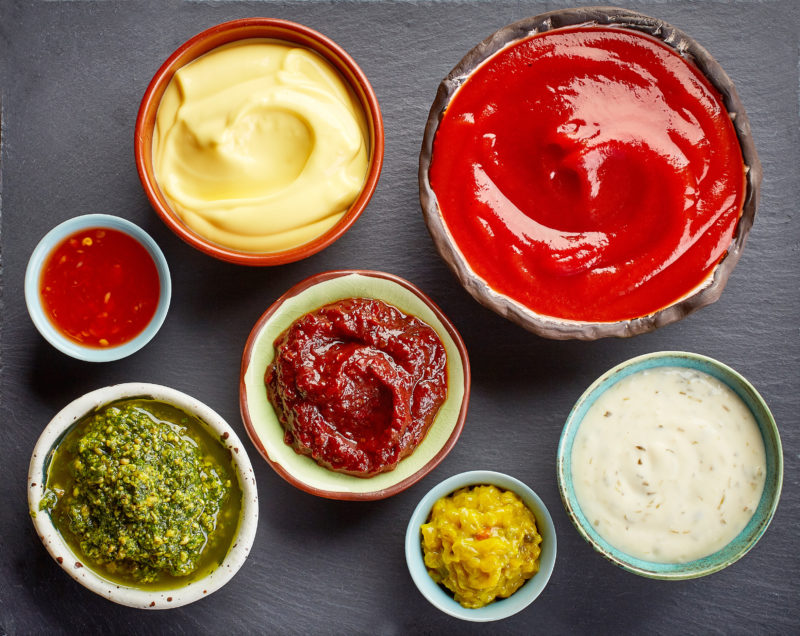
Little things can add up to a big difference. Condiments, for example, are meant to be just a bit of flavoring for your food. And many are just that—low- or even no-calorie add-ons that bump up the taste and satisfaction of eating your favorite dishes. But a few of them can come with enough excess fat, sugar or sodium to slow progress to your weight loss goal. Here’s how to make smart choices when you’re shopping for condiments.
Free Foods
Some of the most popular condiments are so low in calories and other undesirable components, that you can enjoy as much of them as you want on Nutrisystem!
Mustard
Made from the seeds of a mustard plant blended with water, vinegar, lemon juice, or wine, mustard has just three calories in a teaspoon. You can choose from a wide variety, including whole-grain, spicy and Dijon, each with subtle flavor differences.
Limit: Honey mustard, which has added sugar, or Dijonnaise, made by blending mustard with mayonnaise, load you up with extra calories.
Vinegar
Red wine, white wine, apple cider, and rice are the main ingredient in different types of vinegar, each with its own distinct flavor. A tablespoon of these condiments has about three calories. Vinegar infused with herbs such as tarragon or basil makes a flavorful salad dressing all by itself.
Limit: Because of its high sugar content, limit yourself to no more than one tablespoon of balsamic vinegar in each serving.
Soy Sauce
Soybeans are fermented and blended with roasted grains to make this popular ingredient in Asian cuisine. It has nine calories in a tablespoon and it even gives you 1.5 grams of protein. Soy sauce adds savory flavor to grilled chicken or vegetables.
Limit: Standard soy sauce, which can have as much as 879 milligrams of sodium, or about 35 percent of the RDA, in a tablespoon. Stick with less sodium or light varieties.
Salsa
The popular dip for tortilla chips and topping for burritos and tacos is loaded with vitamin-rich, non-starchy vegetables, including tomatoes, peppers, and onions. You get just four calories in a tablespoon of salsa. Try mixing it with canned tuna instead of mayonnaise for a zesty, low-calorie protein.
Limit: Salsa con queso, the blend of the condiment with cheese, is loaded with unhealthy fats.
Hot Sauce
For lovers of spicy foods, hot sauce is an indispensable condiment made from peppers that range in taste from tingly to five-alarm fire. All have almost no calories, so you can enjoy as much as you like. Bonus: Capsaicin, the compound that makes peppers hot, may heat up your metabolism along with your taste buds.
Limit: Bottled “buffalo sauce” sold for chicken wings often is standard hot sauce mixed with butter or another fat, adding unwanted calories.
Sriracha Sauce
A type of hot pepper sauce originally from Thailand, sriracha has become a trendy new ingredient in the last few years. You get just five calories in a tablespoon and it comes with 38 percent of your RDA for vitamin C. The most popular brand has a modest one gram of sugar in each teaspoon.
Limit: Sriracha Mayo adds the fats of the creamy spread to the low-calorie hot sauce.
Extras
You can enjoy other condiments not on the list above, but you want to limit serving size and frequency to ensure you stay on track to your weight loss goal.
Ketchup
America’s most popular topping for hot dogs and dipping sauce for French fries is made with tomatoes, so it supplies you with healthy nutrients like vitamin C and potassium. A tablespoon, the recommended serving size, has about 19 calories, but it comes with more than 3.5 grams of sugar.
Look for: Natural or organic brands are free of high-fructose corn syrup, a sneaky offender in condiments.
Mayonnaise
Eggs, oil and vinegar are the simple ingredients in the creamy sandwich spread. You get about 68 calories and 7.5 grams of fat in a teaspoon, the recommended serving size. For adding creaminess to sandwiches and other dishes, consider substituting mashed avocado, which has healthier mono-unsaturated fats.
Look for: “Light” varieties have one-third fewer calories than the regular version, while reduced fat types have at least two fewer grams of saturated fat than the full fat version. You can eat up to one tablespoon of these types.
Salad Dressing
You can categorize bottled salad dressings into two main groups: oil-based and creamy. The primary ingredient in vinaigrettes and Caesar or Italian types is olive or vegetable oil. They have about 40 calories and 3.5 grams of fat in a tablespoon, half of the serving size typically recommended on bottles. Buttermilk, mayonnaise, or other saturated fat is the main ingredient in ranch, bleu cheese, Thousand Island and other creamy dressings. You get 65 or more calories and 6.5 grams of fat in tablespoon of these. Nutrisystem recommends no more than one teaspoon per serving of regular salad dressing.
Look for: With fat-free dressings, you get as few as 15 calories in two tablespoons, the serving size suggested by Nutrisystem. Also check out some of the newer, creamy versions that use yogurt to provide a creamy texture without increasing the calorie count tremendously.
Relish
While it comes in many varieties, the basic relish is made from chopped pickled cucumbers with herbs and spices. It’s a flavorful addition to tuna or egg salad, or mix it with nonfat yogurt to make a delicious dip. You get about 20 calories in a tablespoon, the recommended serving.
Look for: Choose dill relish, which has little or no sugar, rather than sweet relish, which may have added sweeteners.
Cocktail Sauce
The standard ingredients in this popular seafood dip are ketchup, horseradish, hot sauce, but many brands add sweetener. The well-known brands have about 13 calories, 7 grams of sugar, and 220 milligrams of sodium in a tablespoon.
Look for: Some brands offer low-carb varieties, with less sugar. Or make your own cocktail sauce—it’s easy to whip up in minutes.
Maple Syrup
Sugar in any form is a high glycemic food, meaning it can cause spikes and sharp declines in your blood sugar, which may interfere with your energy levels, could lead to cravings, and ultimately interfere with the process of steady weight loss. And while real maple syrup has valuable nutrients, including iron, potassium, and calcium, it is loaded with sugars. Some popular brands are simply corn syrup with maple flavoring, so you don’t even get the vitamins and minerals that come in authentic maple syrup.
Look for: Sugar-free maple syrup, which has only eight calories in a tablespoon and would therefore count as a Free Food on Nutrisystem.
Wasabi
The simple paste made from a Japanese variety of horseradish is served as a spicy dip with sushi and other Asian dishes. It has about 15 calories in a teaspoon, but little or no sodium or sugars. It can be blisteringly hot, so use it sparingly—at least until you test your own tolerance for it.
Limit: Wasabi sauce may be blended with vegetable oil or even mayonnaise. Go for wasabi paste or powder instead.





